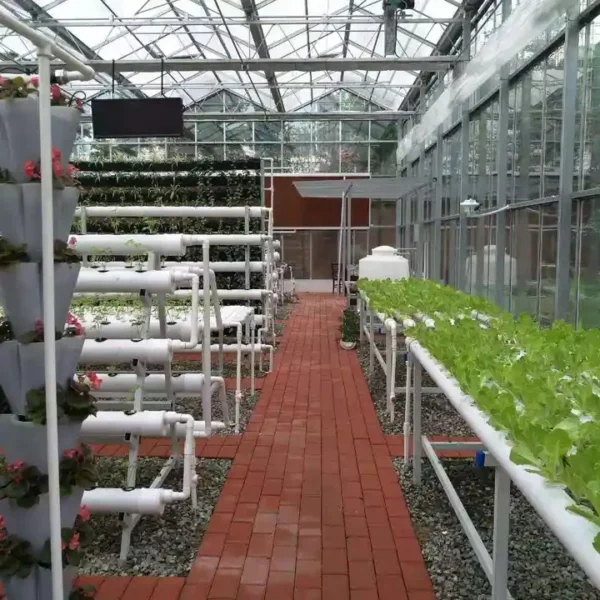Hydroponic greenhouse systems have gained significant attention in recent years as innovative and sustainable solutions for crop production. By utilizing water-based nutrient solutions instead of traditional soil cultivation, hydroponics offers numerous advantages in terms of resource efficiency, crop quality, and year-round production. In this article, we will explore the diverse applications of hydroponic greenhouse systems, highlighting their potential in various settings and sectors.
Commercial Agriculture
- High-Value Crops
Hydroponic greenhouse systems are often employed in the cultivation of high-value crops such as gourmet herbs, salad greens, microgreens, and specialty vegetables. The controlled environment, coupled with precise nutrient delivery, enables growers to produce high-quality, consistent, and marketable produce. - Urban Farming
Hydroponics is particularly well-suited for urban farming, where limited space and soil quality constraints exist. Hydroponic greenhouse systems allow urban growers to maximize productivity in compact areas, bringing fresh produce closer to urban populations and promoting local food production. - Vertical Farming
Vertical farming, a form of indoor agriculture, utilizes hydroponic systems in stacked or tiered configurations. Hydroponic greenhouse systems facilitate efficient space utilization and vertical crop production, making them ideal for maximizing yields in vertical farming setups.
Research and Education
- Plant Sciences:Hydroponic greenhouse systems serve as invaluable tools in plant science research, allowing scientists to investigate plant physiology, nutrient uptake, and growth patterns in controlled environments. These systems enable experimentation and the development of new techniques for optimizing plant growth.
- Educational Institutions:Hydroponic greenhouse systems are increasingly being integrated into educational curricula. They provide students with hands-on learning experiences in horticulture, agronomy, and sustainable agriculture. Hydroponics offers a tangible way for students to understand plant nutrition, water management, and crop production in controlled environments.
Non-Traditional Environments
- Arid or Water-Scarce Regions
Hydroponic greenhouse systems can be employed in arid regions or areas with limited water availability. By recirculating and reusing water within the closed system, hydroponics minimizes water usage compared to conventional soil-based agriculture, making it a sustainable option in water-scarce environments. - Harsh Climates
In regions with extreme climates, such as cold winters or hot summers, hydroponic greenhouse systems provide a controlled and insulated environment for year-round crop production. The ability to regulate temperature, humidity, and light levels delivers consistent growing conditions, protecting crops from adverse weather conditions.
Specialized Crop Production
- Medicinal and Culinary Herbs
Hydroponic greenhouse systems are well-suited for the cultivation of medicinal and culinary herbs. The controlled environment ensures optimal growth and potency of herbs, meeting the quality standards required for pharmaceutical or culinary purposes. - Cut Flowers
Hydroponics allows for the production of cut flowers with extended vase life and superior quality. The precise control over nutrient delivery and environmental factors enhances flower development, resulting in visually appealing and long-lasting blooms.
Hydroponic greenhouse systems offer versatile applications in various sectors, ranging from commercial agriculture to research and education. The resource efficiency, year-round production capabilities,hydroponic greenhouse systems and adaptability to non-traditional environments make hydroponics an attractive option for sustainable crop cultivation. As technology and knowledge in hydroponics continue to advance, these systems have the potential to revolutionize the way we grow food and address the challenges of feeding a growing global population.
